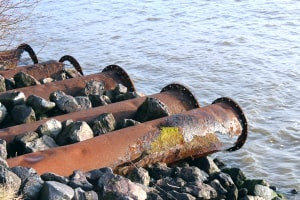Engineering structures like pipelines, storage tanks, ship hulls, offshore structures and so on are among the major infrastructure projects that are affected by widespread corrosion. Cathodic protection is a method for preventing corrosion on them. This course is designed to give you the details of cathodic protection and explain corrosion control and preventive measures. You start by learning about forms of corrosion, corrosion control measures, as well as the chemical reactions that cause it. You will study the types of corrosion that affect the external engineering body structures. The role of soil, microbes, and metal surfaces, and how they affect the external corrosion of pipelines will be highlighted. Then, the basic principles of cathodic protection will be considered. You will also learn the differences between chemical and electrochemical reactions in corrosion. The Evans diagram will be used to verify the relationship between potential and current in the electrochemical corrosion process of metals in this section. Understanding the basics of cathodic protection criteria is as important as understanding its implication on corrosion, hence the various types of criteria available for cathodic protection and their merits and limitations will be explained.
The pipelines applicable to engineering structures in a typical plant and buried structures undergo a lot of changes over time. In this section, you will learn the concepts involved in assessing pipelines experiencing corrosion through surveys. This will be taught in two parts: firstly, natural surveys that apply to buried pipelines, the soil resistivity survey, and the pipe-to-soil potentials survey. The second part deals with line and drain current measurements surveys. You will get familiar with the information that is required to survey a pipeline with or without cathodic protection. The American Water Works Association’s (AWWA) rating system for soil corrosivity will be explained. Then, you will study the importance of anode ground beds as well as the equations governing their resistivity. Specific aspects of cathodic protection concerning storage tanks, offshore structures, and ship hulls will be discussed. The cathodic protection of tanks, tank bottoms, heat exchangers (water-cooling systems), and offshore structures that involve pipelines and floating structures will be broken down.
It is important to understand how anodes perform in order to have a better anode for the cathodic protection of structures. In this section, you will study the functions and requirements of anodes and the role of polarization of ground bed anodes. Then, you will be taught equations that will enable you to better understand the concepts of cathodic protection, illustrated by four examples. The sources of stray current corrosion, and how to detect and mitigate them in buried engineering structures, will be discussed. You will also learn why a protective coating is required when the pipeline and other structures are cathodically protected. The requirements of these coatings and their types appropriate to engineering pipelines will be outlined. Furthermore, the methodology of controlling corrosion of internal oil and gas pipelines, which is entirely different from other pipelines, will be considered. Towards the end of the course, the basic principles of anodic protection and how they can be applied in the field will be examined. The differences between anodic protection and cathodic protection will also be evaluated. This course is challenging and technical but anyone studying cathodic protection, or related fields such as metalworking or corrosion engineering will find it fulfilling. Are you up for the challenge? Start this free online course today.
What You Will Learn In This Free Course
View All Learning Outcomes View Less All Alison courses are free to enrol, study, and complete. To successfully complete this Diploma course and become an Alison Graduate, you need to achieve 80% or higher in each course assessment.
Once you have completed this Diploma course, you have the option to acquire an official Diploma, which is a great way to share your achievement with the world.
Your Alison certificate is:
- Ideal for sharing with potential employers.
- Great for your CV, professional social media profiles, and job applications.
- An indication of your commitment to continuously learn, upskill, and achieve high results.
- An incentive for you to continue empowering yourself through lifelong learning.
Alison offers 2 types of Diploma for completed Diploma courses:
- Digital Diploma: a downloadable Diploma in PDF format immediately available to you when you complete your purchase.
- Physical Diploma: a physical version of your officially branded and security-marked Diploma
All Diplomas are available to purchase through the Alison Shop. For more information on purchasing Alison Diploma, please visit our FAQs. If you decide not to purchase your Alison Diploma, you can still demonstrate your achievement by sharing your Learner Record or Learner Achievement Verification, both of which are accessible from your Account Settings.











 Avg. Hours
Avg. Hours  Contains Video
Contains Video  CPD Accredited
CPD Accredited 


 Total XP:
Total XP: 
 Knowledge & Skills You Will Learn
Knowledge & Skills You Will Learn 






